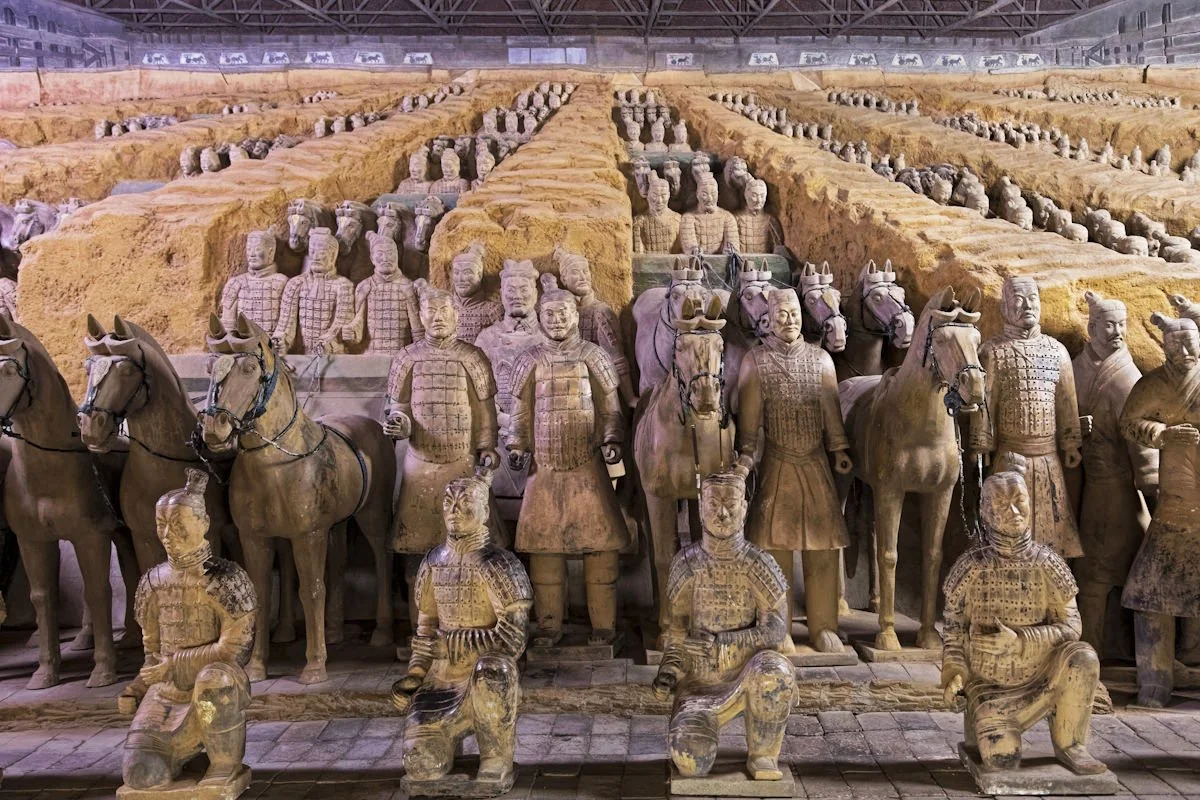March 29: Discovery of the Chinese Terracotta Warriors (1974)
Prayer Idea
Pray for all people, including government leaders, to trust in God instead of living in fear.
History Note
In 246 BC Zhao Zheng became emperor of Qin (pronounced “chin”), a kingdom in what is now western China, at the age of thirteen. Over the next twenty-five years, Zhao gained control of all of the other states in the region. In 221 BC he declared himself to be Shihuangdi, which means First Sovereign Emperor. (The name Qin, also transliterated Ch’in, is the origin of the English word “China.”)
Shihuangdi created a rigid central government throughout his empire. He built an imposing palace. His government put in place a system of laws, a standardized writing system, uniform weights and measures, canal and road systems, a standard width of roads, and even regulations for how long axles on carts could be. To try to eliminate any ideas that might lead people to oppose his rule, he ordered the burning of all books that did not deal with practical subjects such as medicine and agriculture or that were not housed in the imperial library. Despite these policies, many books and other artifacts of earlier times survived the Qin years.
Chinese rulers had been building defensive walls for centuries. Shihuangdi undertook to connect various walls, some of which were parallel to each other, into one great wall. He did this primarily to keep northern Mongol nomad invaders out of his empire, but the wall also served to keep foreign ideas and practices out of his realm. Later dynasties over many centuries extended and strengthened the Great Wall of China.
During his last years as emperor, Shihuangdi rarely went out among the people. He became suspicious of people who worked in his government. This is understandable since he survived three attempts to assassinate him. He was not only interested in the protection provided by the Great Wall. Evidently Shihuangdi also wanted to create an army that would protect him even after death. He ordered the preparation of a huge burial complex, built inside a mountain and covering about twenty square miles.
On March 29, 1974, farmers in Xian, China, came across pieces of a clay figure. This led to the discovery and excavation of Shihuangdi’s tomb. Researchers found over eight thousand life-sized figures of men and horses made of terra-cotta. Each statue has unique characteristics that distinguish it from others. These statues have become famous symbols of Chinese history and culture.
The terracotta army of Shihuangdi. Photo by DnDavis / Shutterstock.com.
Learn More
Watch this video about Shihuangdi’s tomb. Please note: It discusses ideas about the afterlife.
Learn more at Homeschool History.
